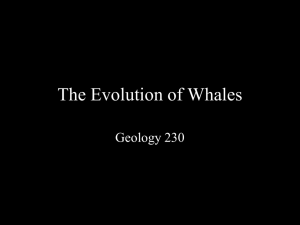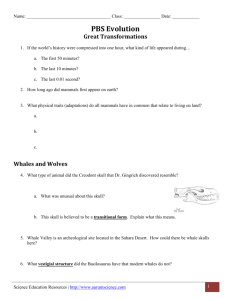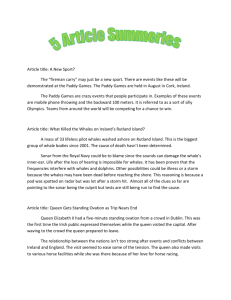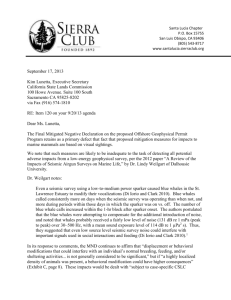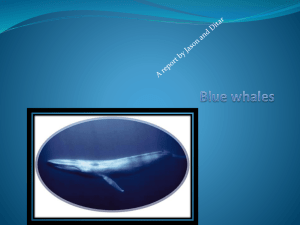The Prolific Afterlife of Whales
advertisement
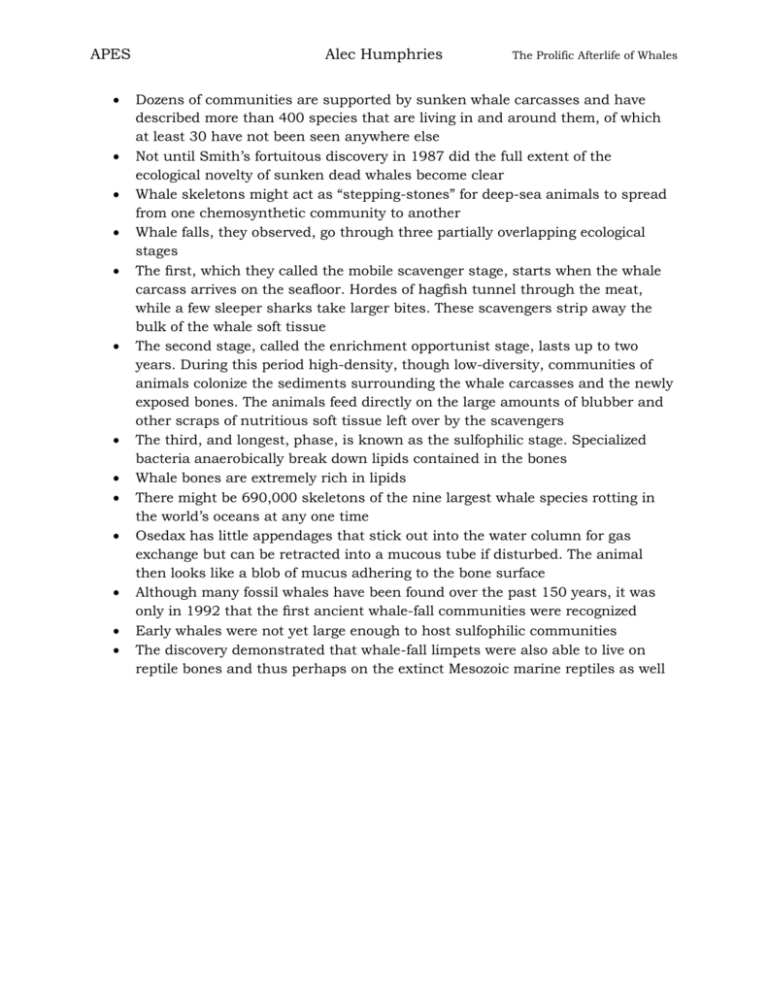
APES Alec Humphries The Prolific Afterlife of Whales Dozens of communities are supported by sunken whale carcasses and have described more than 400 species that are living in and around them, of which at least 30 have not been seen anywhere else Not until Smith’s fortuitous discovery in 1987 did the full extent of the ecological novelty of sunken dead whales become clear Whale skeletons might act as “stepping-stones” for deep-sea animals to spread from one chemosynthetic community to another Whale falls, they observed, go through three partially overlapping ecological stages The first, which they called the mobile scavenger stage, starts when the whale carcass arrives on the seafloor. Hordes of hagfish tunnel through the meat, while a few sleeper sharks take larger bites. These scavengers strip away the bulk of the whale soft tissue The second stage, called the enrichment opportunist stage, lasts up to two years. During this period high-density, though low-diversity, communities of animals colonize the sediments surrounding the whale carcasses and the newly exposed bones. The animals feed directly on the large amounts of blubber and other scraps of nutritious soft tissue left over by the scavengers The third, and longest, phase, is known as the sulfophilic stage. Specialized bacteria anaerobically break down lipids contained in the bones Whale bones are extremely rich in lipids There might be 690,000 skeletons of the nine largest whale species rotting in the world’s oceans at any one time Osedax has little appendages that stick out into the water column for gas exchange but can be retracted into a mucous tube if disturbed. The animal then looks like a blob of mucus adhering to the bone surface Although many fossil whales have been found over the past 150 years, it was only in 1992 that the first ancient whale-fall communities were recognized Early whales were not yet large enough to host sulfophilic communities The discovery demonstrated that whale-fall limpets were also able to live on reptile bones and thus perhaps on the extinct Mesozoic marine reptiles as well APES Alec Humphries The Prolific Afterlife of Whales Once a whale dies, its body goes a long way before suddenly disappearing. When whales die, they will eventually fall to the deep side of the ocean and will stay there. Whales don't really have anything good given to them during this time period; though in many ways do they give many positives to the communities in the deep sea. These sites at which the whales fall, are called "whale falls". Whale falls are able to support even more than 400 species with the many nutrients they have to offer. The species will be able to nourish in these sites for over a decade. O2 from seawater which oxidizes sulfide, make energy for the species to grow. The average 40 ton whale also is able to carry 2000- 3000 kilograms of lipids which the species can use. As of now, 690000 whales are rotting to make deep sea communities better. I think the discovery of this topic is very interesting. Research in this topic has been able to help us with the history of the whales and the large animals of the sea before them that are able to make a nutritious deep sea floor. This research also shows how the skeletons of these whales can be a stepping stone for many animals . Through these findings I believe we can not only be able to find the history of whales but of the animals flourishing off of them. So What? Well, right now it helps us little it’s just trivial. What if... If we could harvest the bacteria and use them for medical purposes if they have any. Says Who? Craig Smith and his team at The University of Hawaii at Mauna Loa. This reminds me of... How birds make their nests.




